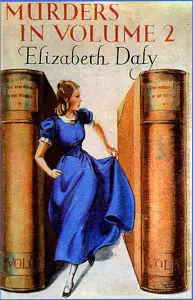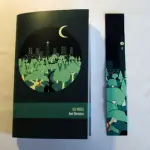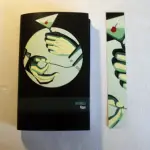I always judge a book by it’s cover, how can I not? Despite the notorious adage, almost everybody does and publishers know it. The process of conceptualizing a book cover design to it’s printing is a complicated and intricate operation. Many graphic designers and artists dedicate their art to the process of wrapping the pages of your most loved classics and debuts; this is their process.
When any writer has an upcoming publication, or when publishers are producing a reprint of a classic, the cover is part of the intensive marketing and image process all books must endure. Lionel Shriver has written several interesting pieces, dictating (and condemning, in parts) the process the author must go through, within the publishing house, in order to approve and create a book cover fit for the dictated audience. The process is often complicated and must be scrutinized heavily by market research and audience factors.
One may feel the apparent coldness in book covers today, simple images, manipulated and pared with equally unenthused fonts. Are the aesthetics of the book industry to be trumped by the easily obtained and fleeting digital book age? It is entirely possible that the aesthetics of the profit hungry side of the book industry have finally been over taken by the digital art common amongst high profile publishers. But there are still designer, publisher and author teams willing and ready to create art within their literature and their product.
Steve Ernest is one of these designers. A designer with a passion for art, literature and the aesthetic wishes of a hungry book buying audience and of a focused and dedicated author. “Usually, when you receive a job to do cover art it can go one of two places. Usually, it will get designated to either a designer or an illustrator. An illustrator will take a more traditional art based approach, where as a designer may have more of a clinical process based approach to creating the art,” he states, “Either way the constraints of the design or artwork will be set by the client brief and you’ll have varying levels of engagement with the publisher or artists on how the art should be conceived.”
What kind of engagement or constraints could be set for a designer, would it have anything to do with author contribution? “Well, that depends, if there has been a set guideline as a result of previous art forming a series, then you will more or less have to follow the preset theme. Using existing art styling is a much less arduous task than creating new conceptual art for an emerging book or series. Either way the constraints of the design or artwork will be set by the client brief and you’ll have varying levels of engagement with the publisher or artists on how the art should be conceived. If there has been a set guideline as a result of previous art forming a series, then you will more or less have to follow the preset theme.”
But what does this mean for the publication in terms of the collaboration between the artist, author and publisher? “Ultimately I think the ‘collaboration,’ so to speak, would depend on what the publisher or author can facilitate for in terms of art. In my experience most fiction has sub-par artwork unless there’s a potential blockbuster in the midst. You’re more likely to find amazing art in art and design books but that’s a given.”
Maybe art books are the only hope for non-formidable cover design? Laura Perm-Jardin, another graphic designer, has a slightly different conceptual twist on book design. What is it? She is also a writer. One of her more recent projects was to create new, intriguing and contemporary covers for H.G Wells novels.
Perm-Jardin told us, “as a design team, our primary audience for the project was described to us as ‘design savvy readers.’ These consumers will be drawn to the H.G Wells series because of the clearly accentuated design aesthetic the team has created. The modern stylised illustrations which are included on the bookmarks (pictured) create a desirable collectors package. The cohesion between the individual novel renders the series a ‘collectors edition’ and urges the audience to purchase the novels together.”
Her focus, she described, as being drawn towards the aesthetics of the literature, as well as the heavy cultural already built and understood within the H.G Wells readership, and within the literary community at large. “Fans of H.G Wells more popular novels such as War of the Worlds may not previously have noticed the authors other titles along side the popular classic science fiction on the shelf. By using a bold, bright and attention grabbing colour scheme the series will attract attention from readers who have previously failed to notice H.G Wells other works of fiction. The main intentions to attract attention of this audience was to make the series striking and ‘new’ looking so that interest would be drawn to the series novels and perhaps urge the audience to discover more of H.G Well’s lesser-known writing.”
The process to reach the desired audience “began with brainstorming on how to achieve the initial brief. A colour scheme was established to ensure cohesion between the books and possible design styles were discussed. The next step was to create wire frame mock-ups. The sketches and mock-ups from the initial design proposal were adjusted and re-evaluated several times, before they had even been brought to any member of the client base.” The client base being that of the publisher, since it would be difficult to get H.G Wells to report on anything relating to his writing, cover design or Pulitzer Prize.
Perm-Jardin expresses little concern for the possiblility of ‘lost aesthetics’ of the book cover design and rather that, “the consumer may be out of touch with the content of the literature.” With so many book designers being forced to meet briefs, often with detailed descriptions of cover concepts, it can be difficult to get across the real emotion a writer was portraying in a piece of work. However, “I think that a lot of independent book publishers will thrive in the current climate.” With the introduction of digital and e-books, “those who are wholly interested in the book, aesthetically and as a product, will be able to fish through a more reader focused, rather than buyer focused market place.”
All in all, book design can be a difficult, constrictive and eloborate environment for a designer, but what about a publisher?
Creative Collective is an indie publisher in Brisbane, Australia and their cover design comes from a strong sense of publication-based aesthetics. They have said that their cover design, “has a primary focus on fitting the C-Coll market, which is primarily young and creative people in the community. They don’t have a lot of money and, to be honest, neither do we. We are interested in creating a brand, where someone can see our publications and realize who the publisher is. We publish a lot of unknown writers and that makes all the difference, once a name becomes famous, the cover is more about that brand. But for the moment, we are focused on building our publishing company and are happy doing that with the focus on C-Coll and not on the writers, as contrived as that may sound, it works.”
The overall brand the publication is trying to sell is of utmost importance, weather there is money trading hands or not. Vice magazine is a perfect example of a publication using it’s brand focus to get issues off the shelves (or floor, as it may seem.) The book cover design is chosen to attract attention to the relative market place, whatever that may be. The end of book publishing is not near, despite cries from Borders-familiar buyers, the beginning of a new focus, artistic direction and a unity never before seen by writers, publishers and artists is just over the horizon. “I have never been more excited by what kind of covers I can create!” Perm-Jardin exclaims, “if they want to read fiction without the artistic and personal focus, they can get it online or in a Big-W.” I guess we will wait and see, but until then, I need to get my hands on a few limited edition H.G Wells.







Indie publishing is putting book cover designers and authors together in new strategic and exciting ways. The potential here is for a much better connection to the voice and emotion of the book. This however is often curtailed by price. Authors and indepentant publishers are also driving the price for cover design down to record lows. End result? The good designers are spending less and less creative effort so that they can compete in the market. My 2 Cents.
It’s quite a challenge to design a cover for a business book. The regular stuff has been done so many times that it has no effect. To be different so at least you get noticed, you need to have a creative mind but with a business bent. A rare quality if I may say.